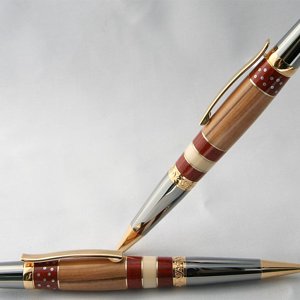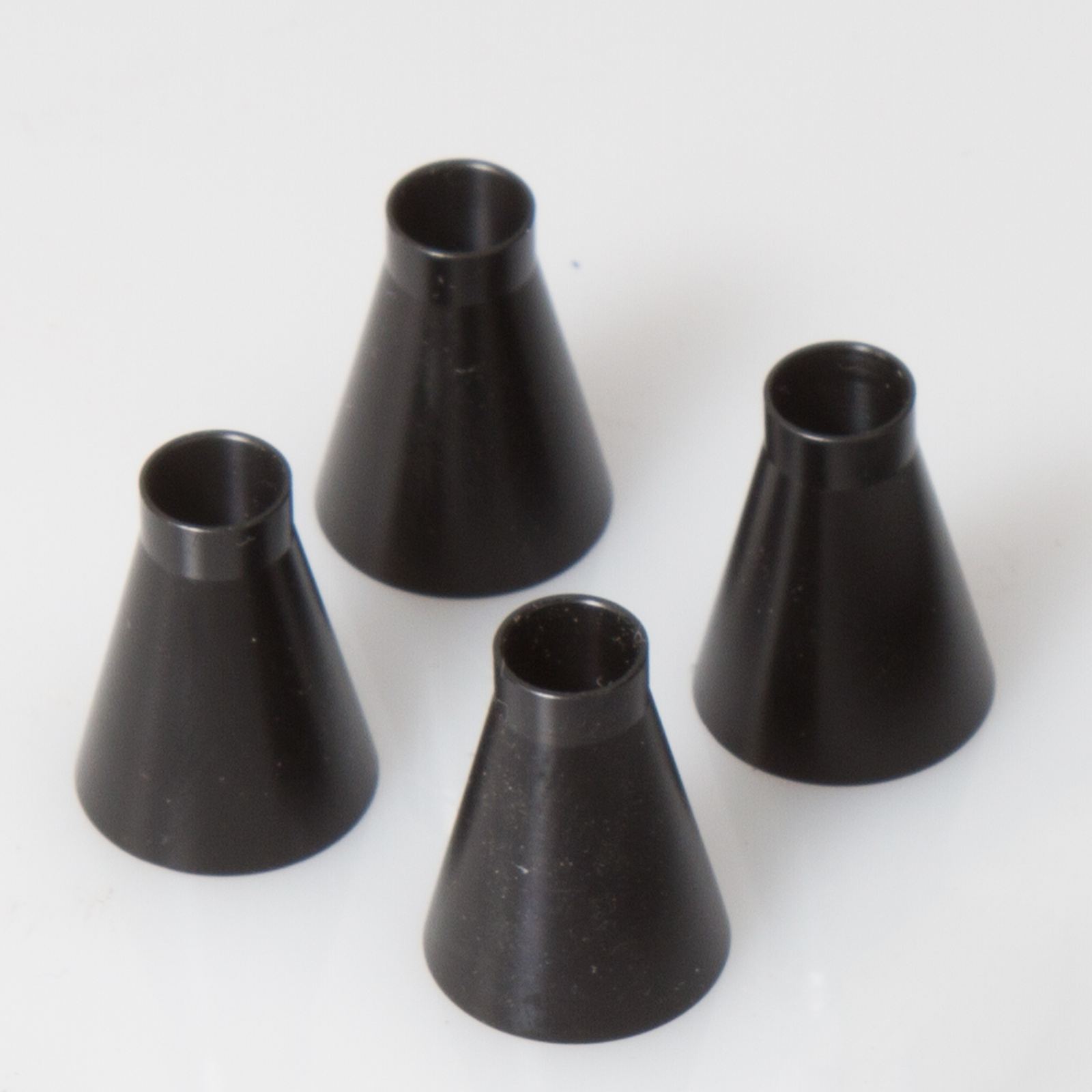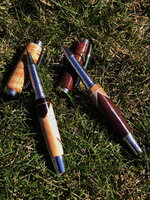My beautiful, curly maple blanks turn dull looking after sanding.
After my wooden pen blanks are turned to the size and shape I want I then move to the sanding process. Depending on the wood, I usually start sanding at 150 grit and step up through 180,220,320,400,600,1500 and 2000. (The fine grit 600,1500 and 2000 sandpapers I can get are all black colored.) When I use a light colored wood, such as a maple, I notice it begins to turn gray, especially when I move to the high grits. Thinking it might be metal dust from the metal bushings I try to be as careful as I can and hardly touch them with sandpaper. Lately I have experimented with some Aluminum inlay and with the metal in the wood I can't avoid it. I read about using denatured alcohol to clean a blank - In Canada we can not get denatured alcohol so I substituted isopropyl alcohol but it doesn't do anything but make the wood feel rougher. With a dark colored wood the staining isn't visible so this isn't an issue with darker blanks. I don't wet sand with water or oil either.
I suspect it might be from fine metal particles sanded off a bushing or from the metal inlay. Any suggestions? Thanks in advance.
After my wooden pen blanks are turned to the size and shape I want I then move to the sanding process. Depending on the wood, I usually start sanding at 150 grit and step up through 180,220,320,400,600,1500 and 2000. (The fine grit 600,1500 and 2000 sandpapers I can get are all black colored.) When I use a light colored wood, such as a maple, I notice it begins to turn gray, especially when I move to the high grits. Thinking it might be metal dust from the metal bushings I try to be as careful as I can and hardly touch them with sandpaper. Lately I have experimented with some Aluminum inlay and with the metal in the wood I can't avoid it. I read about using denatured alcohol to clean a blank - In Canada we can not get denatured alcohol so I substituted isopropyl alcohol but it doesn't do anything but make the wood feel rougher. With a dark colored wood the staining isn't visible so this isn't an issue with darker blanks. I don't wet sand with water or oil either.
I suspect it might be from fine metal particles sanded off a bushing or from the metal inlay. Any suggestions? Thanks in advance.



